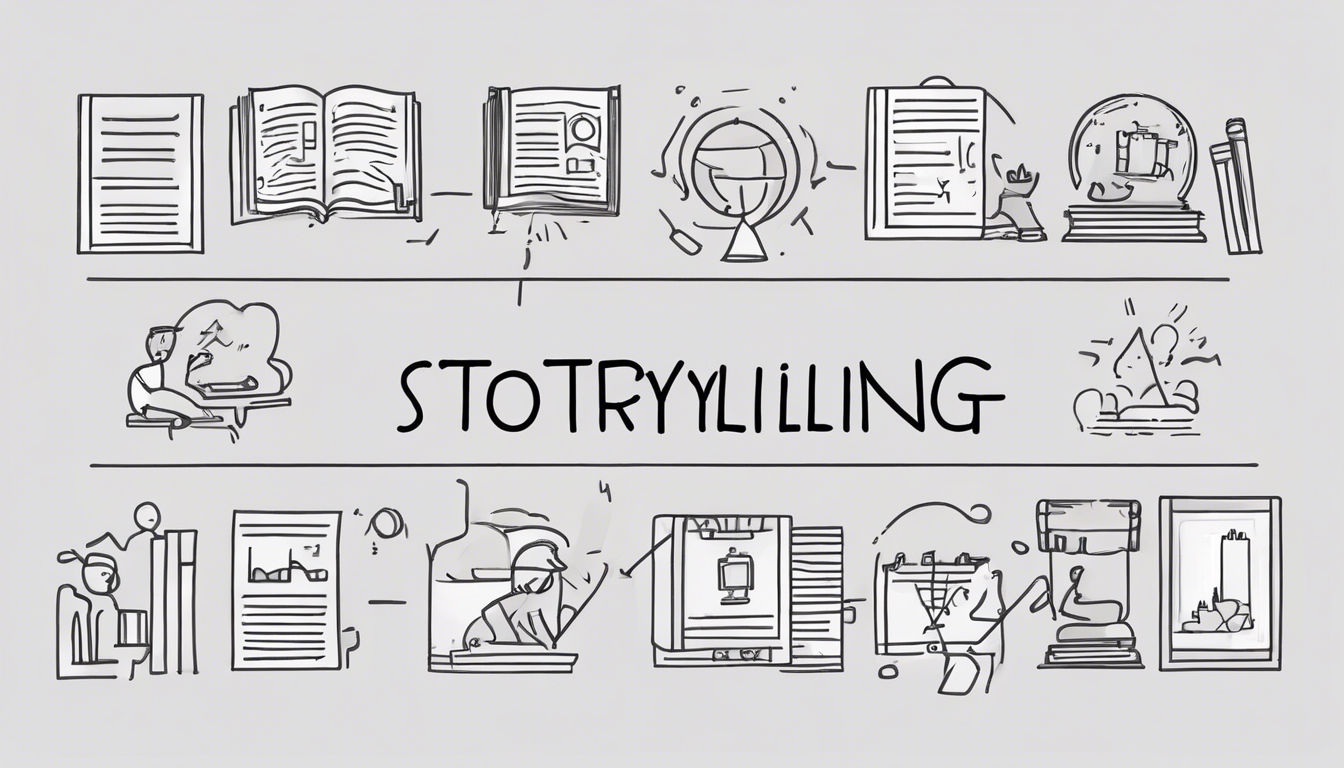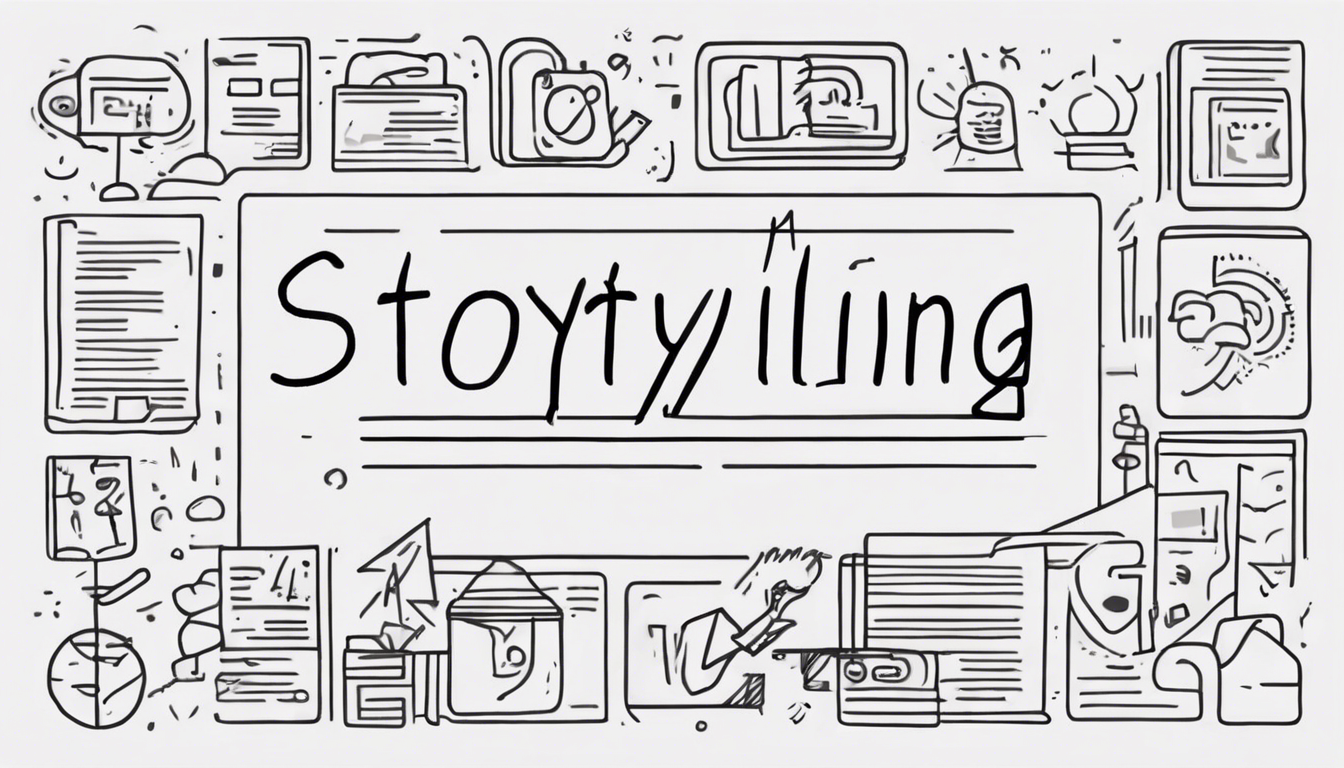Introduction to Storytelling Techniques

Storytelling is like the magic potion of communication, weaving words into captivating narratives that transport us to different worlds. It’s the art of painting pictures with words, engaging our senses, emotions, and intellect all at once. At its core, storytelling is the oldest form of human expression, dating back to ancient times when tales were shared around campfires. It’s the heartbeat of culture, connecting us through shared experiences and universal truths.
The importance of storytelling in communication cannot be overstated. Whether it’s a bedtime story soothing a child to sleep or a riveting TED talk inspiring change, stories have the power to captivate, educate, and persuade. Through storytelling, complex ideas become accessible, dry facts turn into memorable lessons, and brands forge emotional connections with their audiences. It’s the secret sauce that makes information stick and ideas spread like wildfire.
An overview of storytelling techniques reveals a rich tapestry of methods used to craft compelling narratives. From the vivid imagery of visual storytelling to the lyrical cadence of oral traditions and the timeless elegance of written tales, each technique brings its unique flavor to the storytelling table. Understanding these techniques is like having a toolbox full of storytelling magic tricks, ready to be deployed to engage, entertain, and enlighten any audience.
Types of Storytelling Techniques

Visual storytelling is the master of show, don’t tell. Through the interplay of images, colors, and symbols, visual stories bypass language barriers to speak directly to our visual cortex. From ancient cave paintings to modern cinema, visual storytelling has evolved to encompass a wide range of mediums, including photography, graphic novels, and even emojis. It’s a universal language that transcends words, appealing to our primal instincts and aesthetic sensibilities.
Oral storytelling is the ancient art of passing down tales through spoken word. From epic poems recited by bards to fireside ghost stories whispered in hushed tones, oral storytelling relies on the power of voice, intonation, and pacing to captivate listeners. It’s a dynamic form of storytelling that allows for improvisation, audience interaction, and the transmission of cultural heritage from one generation to the next. In a world inundated with visual stimuli, oral storytelling reminds us of the raw power of the spoken word.
Written storytelling is the bedrock of literature, where words dance on the page to create worlds within worlds. From the epic sagas of ancient civilizations to the modern novels that grace bestseller lists, written storytelling is a timeless art form that invites readers to immerse themselves in the minds of characters, explore new landscapes, and ponder life’s deepest questions. It’s a solitary yet communal experience, where the writer’s voice whispers in the reader’s ear, forging an intimate bond across time and space.
Elements of Effective Storytelling

Plot development is the backbone of any good story, the roadmap that guides readers through twists, turns, and revelations. A well-crafted plot keeps audiences on the edge of their seats, eager to uncover what happens next. From the inciting incident that sets the story in motion to the climactic showdown that resolves conflicts, plot development is a delicate dance of pacing, suspense, and payoff that separates forgettable tales from unforgettable classics.
Character development breathes life into stories, transforming words on a page into flesh-and-blood individuals with hopes, fears, and dreams. Memorable characters are more than just names; they are windows into the human experience, reflecting our virtues, flaws, and complexities. Through nuanced character arcs, readers embark on emotional journeys, rooting for heroes, empathizing with villains, and forging connections that transcend the boundaries of fiction.
Setting and atmosphere are the silent architects of storytelling, shaping the mood, tone, and ambiance of narratives. Whether it’s a sun-drenched beach, a fog-shrouded forest, or a bustling metropolis, settings breathe life into stories, becoming characters in their own right. Through vivid descriptions and sensory details, storytellers transport audiences to far-off lands, evoking emotions, triggering memories, and immersing readers in worlds both familiar and fantastical.
Emotional Impact of Storytelling

Eliciting emotions in the audience is the hallmark of powerful storytelling, the ability to make hearts race, tears flow, and laughter ring out. Through skillful use of language, pacing, and imagery, storytellers create emotional rollercoasters that leave lasting impressions on their audiences. Whether it’s a gut-wrenching tragedy that tugs at heartstrings or a heartwarming tale that fills souls with joy, emotional storytelling is a potent elixir that forges connections and fosters empathy.
Creating empathy with characters is the key to unlocking emotional resonance in stories, bridging the gap between fiction and reality. When readers see themselves reflected in the struggles, triumphs, and vulnerabilities of characters, they form emotional bonds that transcend the confines of the page. Empathetic storytelling fosters understanding, compassion, and unity, reminding us of our shared humanity and the power of storytelling to build bridges across divides.
Using conflict to engage emotions is a time-honored storytelling technique that pits characters against insurmountable odds, moral dilemmas, and inner demons. Conflict drives narratives forward, creating tension, suspense, and emotional stakes that keep audiences invested in the outcome. Whether it’s a battle of wills, a clash of values, or a struggle for survival, conflict is the crucible in which characters are forged, emotions are tested, and stories resonate with timeless truths.
Cultural and Historical Significance of Storytelling

The role of storytelling in different cultures is as diverse as the tapestry of human civilization, reflecting unique beliefs, values, and traditions passed down through generations. From the oral epics of ancient Greece to the folk tales of Japan, storytelling is the heartbeat of cultural identity, preserving heritage, instilling values, and fostering community bonds. Each culture’s storytelling traditions offer a window into its soul, revealing the hopes, fears, and dreams that unite humanity across time and space.
The evolution of storytelling throughout history is a testament to the enduring power of narrative to shape societies, inspire revolutions, and transcend boundaries. From the hieroglyphics of ancient Egypt to the digital narratives of the Information Age, storytelling has adapted to changing technologies, ideologies, and worldviews. As civilizations rise and fall, storytelling remains a constant, a beacon of light that illuminates the human experience and charts the course of our collective destiny.
The impact of cultural context on storytelling techniques is a fascinating exploration of how narratives are shaped by the values, norms, and beliefs of their creators. Whether it’s the symbolism of colors in Eastern storytelling, the oral traditions of Indigenous cultures, or the moral allegories of Western literature, cultural context infuses stories with layers of meaning that resonate with audiences on a deep, subconscious level. By understanding the cultural roots of storytelling, we gain insight into the rich tapestry of human expression that spans the globe.
Modern Applications of Storytelling Techniques

Storytelling in marketing and advertising has revolutionized the way brands connect with consumers, transforming pitches into emotional journeys and products into protagonists. Through compelling narratives, brands create emotional resonance, brand loyalty, and customer engagement that transcends traditional advertising tactics. From Super Bowl commercials that tug at heartstrings to viral campaigns that spark social change, storytelling has become the secret weapon of savvy marketers looking to cut through the noise and capture hearts and minds.
Storytelling in digital media has opened up new frontiers of creativity, allowing storytellers to craft immersive experiences that blur the lines between reality and fiction. From interactive storytelling apps to virtual reality simulations, digital media offers endless possibilities for engaging audiences in ways never before imagined. Whether it’s a serialized podcast that keeps listeners on the edge of their seats or a transmedia narrative that spans multiple platforms, digital storytelling is reshaping the landscape of entertainment and communication.
Storytelling in education is a powerful tool for engaging students, fostering critical thinking, and igniting a passion for learning. By integrating storytelling into lesson plans, educators can transform dry facts into living narratives that resonate with students on a personal level. Whether it’s using historical fiction to bring the past to life, creating science fiction scenarios to explore future possibilities, or crafting moral fables to teach ethical values, storytelling in education is a dynamic pedagogical approach that empowers students to become active participants in their own learning journey.
Ethical Considerations in Storytelling

Truth and authenticity in storytelling are the cornerstones of ethical narrative construction, ensuring that stories resonate with integrity, honesty, and transparency. Whether it’s a news report, a memoir, or a work of fiction, storytellers have a responsibility to uphold the truth, even in the realm of make-believe. By staying true to the essence of their stories, creators build trust with their audiences, fostering credibility, respect, and emotional connection that transcends the boundaries of fiction.
Avoiding stereotypes and misrepresentation is a crucial ethical consideration in storytelling, as narratives have the power to shape perceptions, reinforce biases, and perpetuate harmful stereotypes. By portraying diverse, multidimensional characters, challenging stereotypes, and amplifying marginalized voices, storytellers can create inclusive, empowering narratives that celebrate the rich tapestry of human experience. Through conscious storytelling choices, creators can break down barriers, foster empathy, and build bridges across cultural divides.
Respecting cultural sensitivities in storytelling is essential to creating narratives that honor the diversity, traditions, and values of different communities. Whether it’s consulting with cultural experts, conducting research, or seeking feedback from diverse audiences, storytellers can ensure that their narratives are respectful, accurate, and inclusive. By approaching storytelling with cultural humility and openness, creators can forge connections, build understanding, and celebrate the mosaic of human experiences that enrich our shared storytelling tapestry.
Psychological Aspects of Storytelling

The impact of stories on the human brain is a fascinating exploration of how narratives shape neural pathways, trigger emotional responses, and influence cognitive processes. From the release of dopamine during moments of suspense to the activation of mirror neurons when empathizing with characters, storytelling has a profound effect on brain chemistry and function. By understanding the neuroscience of storytelling, we gain insight into the power of narratives to inspire, motivate, and transform our minds.
The connection between storytelling and memory is a testament to the mnemonic power of narratives to encode information, evoke emotions, and create lasting impressions. Whether it’s a childhood fairy tale that lingers in our subconscious or a poignant memoir that resonates with our life experiences, stories have the ability to etch themselves into our memories, shaping our identities and influencing our perceptions of the world. Through the art of storytelling, we become custodians of our memories, weaving the threads of our past into the tapestry of our present.
The influence of stories on behavior and decision-making is a compelling study of how narratives shape attitudes, beliefs, and actions. From persuasive narratives that sway public opinion to cautionary tales that guide moral choices, stories have the power to inspire change, spark revolutions, and shape the course of history. By harnessing the persuasive power of storytelling, creators can influence behavior, drive social change, and empower audiences to become agents of their own stories.
Challenges and Limitations of Storytelling Techniques

Overcoming audience attention spans is a perennial challenge for storytellers in a world inundated with distractions, competing narratives, and information overload. Capturing and holding audience attention requires skillful pacing, engaging content, and strategic storytelling techniques that hook readers from the first sentence and keep them invested until the final page. By understanding the dynamics of audience attention, creators can craft narratives that captivate, entertain, and leave a lasting impact on their audiences.
Balancing creativity with message clarity is a delicate tightrope that storytellers must walk, ensuring that artistic vision aligns with communicative intent. While creativity fuels innovation, imagination, and emotional resonance, clarity is essential for conveying ideas, themes, and messages in a coherent, accessible manner. By striking a harmonious balance between creativity and clarity, creators can craft stories that inspire, provoke thought, and resonate with audiences on multiple levels.
Adapting stories to different platforms and audiences is a multifaceted challenge that requires flexibility, adaptability, and an understanding of audience preferences. Whether it’s tailoring a story for social media, reimagining it for a different cultural context, or translating it into multiple languages, storytellers must navigate the complexities of cross-platform storytelling to reach diverse audiences. By embracing the nuances of each platform and audience demographic, creators can ensure that their stories resonate with maximum impact and relevance.
Conclusion
In conclusion, storytelling techniques are the threads that weave the fabric of human experience, connecting us through shared narratives, emotions, and truths. From the ancient campfires of our ancestors to the digital realms of the Information Age, storytelling remains a timeless art form that transcends boundaries, cultures, and generations. By mastering the craft of storytelling, we unlock the power to inspire, educate, and transform the world around us.
Reflecting on the power of storytelling, we are reminded of its ability to shape perceptions, evoke emotions, and ignite imaginations. Stories have the power to change minds, touch hearts, and leave indelible marks on the tapestry of human history. As we continue to explore the frontiers of storytelling, we uncover new possibilities, new horizons, and new ways to connect with one another through the universal language of narrative.
Looking ahead, the future of storytelling and communication holds endless promise, fueled by technological advancements, cultural exchanges, and the boundless creativity of storytellers around the globe. As we embrace the challenges, opportunities, and ethical considerations of storytelling, we embark on a journey of discovery, enlightenment, and transformation that transcends time and space. The story never ends; it simply evolves, adapts, and continues to captivate audiences for generations to come.





